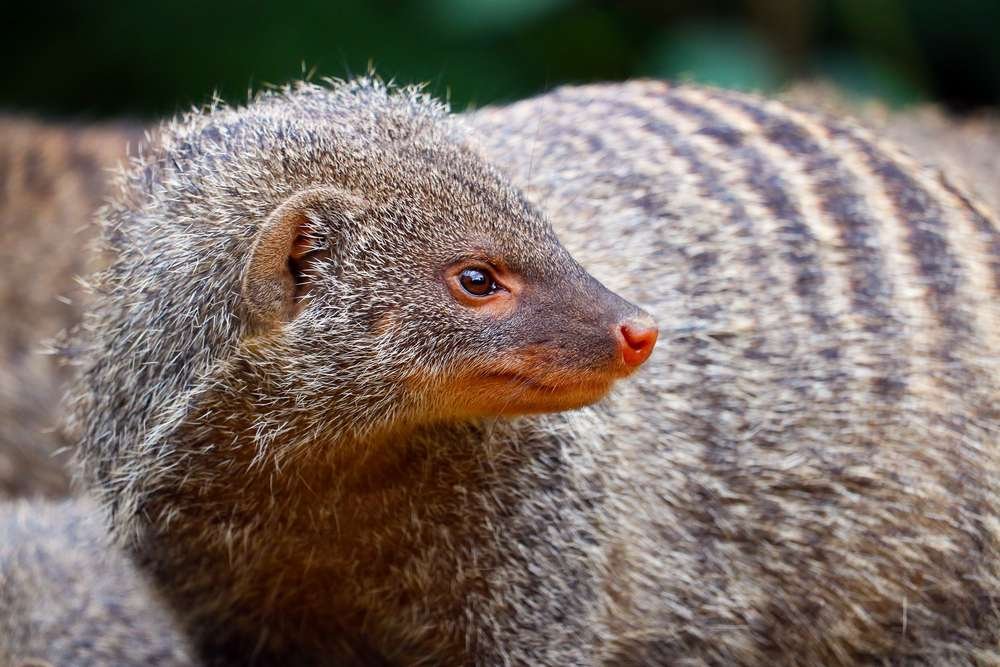Banded Mongoose
- Mungos mungo
- IUCN Status: Least Concern
- Trend: decreasing

- Kingdom: Animalia
- Phylum: Chordata
- Class: Mammalia
- Order: Carnivora
- Suborder: Feliformia
- Family: Herpestidae
- Genus: Mungos
Share:
General Information
Out of the 9 subspecies of mongoose found in Zambia, the Banded Mongoose is the most sighted.
Fun Facts!
Banded mongooses are highly social animals and live in groups of up to 40 individuals. They play an important role in the Zambian ecosystem by controlling populations of rodents and other small animals. Banded mongooses are also known for their bravery and ferocity. They have been known to attack and kill snakes, including venomous snakes. They are known for their cooperative hunting behavior. They work together to take down prey, even animals much larger than themselves.
Banded mongooses have a unique scent marking system. They use their scent to communicate with each other and to mark their territory. The scent markings are produced by glands located on the chin, anal region, and tail.
Description
- Length: 30 to 45 cm
- Weight: 1.5 to 2.25 kg
- Lifespan: 10 years in the wild
Ecology and Behaviour
Banded mongooses feed on insects, small reptiles, birds, Millipedes, ants, crickets, termites, grasshoppers, caterpillars, earwigs frogs, lizards, small snakes, ground birds and the eggs of both birds, reptiles and beetles make up most of their diet. On some occasions, mongooses will drink water from rain pools and lake shores.
Banded mongoose forage in groups but each member searches for food alone. However, they work as a team when dealing with venomous snakes such as cobras. Banded mongooses live in family groups of 7–40 individuals with an average of around 20 individuals.
Banded mongooses have a gestation period of about 60 days. Females typically give birth to 2-4 pups at a time. Pups are weaned at around 6 weeks old and become independent at around 1 year old.
Conservation
It is listed as a “Least concern” on the International Union for Conservation of Nature (IUCN Red list). However, their populations are declining in some areas due to habitat loss and poaching.
Distribution and Habitat
The banded mongoose is found in a large part of East, Southeast and South-Central Africa. There are also populations in the northern savannas of West Africa. The banded mongoose lives in savannas, open forests and grassland, especially near water, but also in dry, thorny bushland but not deserts. They use various types of dens for shelter, most commonly termite mounds. They will also live in rock shelters, thickets, gullies, and warrens under bushes.
Interaction with humans
No donation to this project yet.
| M | T | W | T | F | S | S |
|---|---|---|---|---|---|---|
| 1 | 2 | 3 | 4 | 5 | 6 | 7 |
| 8 | 9 | 10 | 11 | 12 | 13 | 14 |
| 15 | 16 | 17 | 18 | 19 | 20 | 21 |
| 22 | 23 | 24 | 25 | 26 | 27 | 28 |
| 29 | 30 | 31 | ||||


